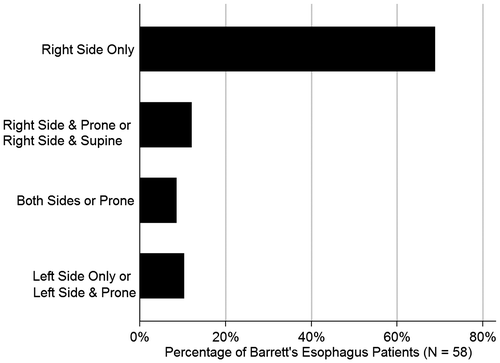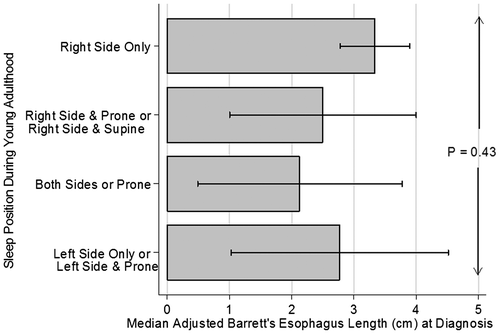Figures & data
Table 1. Characteristics of Barrett’s Esophagus patients stratified by their sleep position
Figure 1. Sleep position during young adulthood.
Note: This figure shows sleep position reported during young adulthood (defined as approximately ages 19 to 29) in 58 patients newly diagnosed with Barrett’s Esophagus.

Figure 2. Sleep position and adjusted Barrett’s Esophagus length at diagnosis.
Notes: This figure shows the adjusted median ages at diagnosis of 58 Barrett’s Esophagus patients by their sleep position as young adults. Other variables in the regression model were age, HH length, heartburn duration, weight gains, alcohol use, and tobacco use.

Figure 3. Sleep position and adjusted age at diagnosis.
Notes: This figure shows the adjusted median ages at diagnosis of 58 Barrett’s Esophagus patients by their sleep position as young adults. Other variables in the regression model were HH length, heartburn duration, weight gains, alcohol use, and tobacco use.

